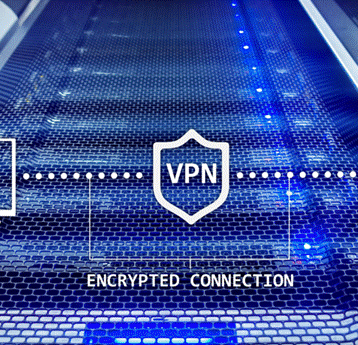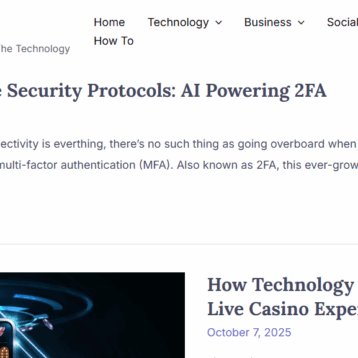
The world has become increasingly digital, with personal information and data stored online and shared globally.
Although this has simplified many processes, it has also left gaps for cybercriminals to target. And, as the criminals are getting smarter, so is the technology that works to prevent cyberattacks. Consider that in 2023, data breaches hit a record-high average cost of $4.45 million, highlighting the urgent need for protection.
This article will touch on modern cybersecurity threats and then delve into the future trends of threat protection.
Growing Cybersecurity Threats
A host of new cyber threats are targeting various sectors, although government, healthcare, and financial institutions are the most targeted because of the wealth of data these industries store.
Sophisticated cyberattacks are becoming more common, and it’s important to know what these threats look like to protect yourself.
Here are the most common cybersecurity threats and hacking techniques:
- Phishing: Messages are sent to people who are tricked into clicking on a link that either exposes data or installs malware.
- Ransomware: Criminals “kidnap” whole datasets and demand payment (often in crypto) to release the data.
- Vulnerabilities in the cloud: Hackers can access cloud storage that’s not adequately protected or encrypted.
- Social engineering: Cybercriminals use social media or phone calls to manipulate people into sharing personal information.
- Internet of Things vulnerabilities: As more devices are linked to the internet, more opportunities are offered for hackers to access personal information connected to those devices.

The Future of Cybersecurity Threat Protection
Artificial Intelligence and Machine Learning
Artificial intelligence (AI) and machine learning (ML) are revolutionizing the threat protection landscape. Complicated algorithms can analyze data sets and user behavior and detect any anomalies. This convenience allows systems to respond to threats in real-time.
Notably, this has led to an arms race between cybersecurity professionals and hackers, as the latter is also utilizing AI and ML to circumvent threat protection measures.
Cloud Computing
Most of us use cloud storage to back up our personal data. This can be very useful should a data breach occur on our devices.
Cloud systems can also act as centralized management systems (cloud detection systems) for various security tools. These tools can be deployed simultaneously if a cyber threat is detected.
Quantum Computing
Quantum computing has resulted in a change in encryption methods, which adds an extra layer of security to online data storage. Quantum computing can also speed up machine learning, like classifying data sets or recognizing user behavior.
However, it should be noted that the development of quantum computing can also benefit cyber criminals, who use these systems to decode modern encryption.
Security Frameworks
Zero trust security requires continuous authentication of user, device, and application identities for network access (whether part of the organization or not). This framework makes it virtually impossible for hackers to access networks or data. This framework makes it virtually impossible for hackers to access networks or data.
VPNs
As cyberattacks evolve, virtual private networks (VPNs) will remain necessary threat protection measures. Reliable VPNs encrypt information sent between two endpoints, protecting that information from hackers who might try to access it.
Extended Detection and Response (XDR)
Security and event management (SIEM) solutions have evolved into XDR platforms. XDR unifies data gathered from different sources and feeds it to a central platform, which can then detect any suspicious activity that might indicate a cyber-attack.
Whereas SIEM had individual logs, XDR provides an overview of your security landscape, allowing faster threat detection and more efficient responses.
Updated Cybersecurity Regulations
Regulatory bodies and governments are strengthening regulations around cybersecurity. Organizations that store or manage data must adapt to comply with stricter requirements.
Examples of regulations include:
- General Data Protection Regulation (European Union)
- Cybersecurity Maturity Model Certification (US Department of Defence)
- California Consumer Privacy Act (California, USA)
Internet of Things (IoT) Security
More devices and appliances are connected online than ever before. Although this is incredibly convenient, it also means that plenty of personal information connected to these devices is now online.
Suppliers of smart devices will have to ensure their devices are secure and update software to allow for two-factor authentication.
Improved Collaboration
In the past, cybersecurity companies kept their methods to themselves. However, as cyberattacks become more commonplace, these companies are starting to collaborate. Cybersecurity professionals will share methods of preventing or spotting attacks, as well as any new cybercrime attempts.
Multi-factor Authentication
Multi-factor authentication requires users to provide multiple levels of authentication before accessing a network or account. Instead of just filling in a password, users may have to supply additional information or use biometrics for access.
This prevents attackers from gaining access as they’re unlikely to have the various pieces of information required to log in.

The Importance of Threat Protection
Businesses and individuals need to adopt the latest threat protection strategies to prevent cyber-attacks from happening in the first place. Cybersecurity measures will protect against hackers gaining access to critical data and can also aid in mitigating the effects if a breach occurs.
Conclusion
The digital landscape is constantly evolving, exposing both opportunities and vulnerabilities. Cybercriminals might be becoming more sophisticated, but threat protection measures are advancing rapidly, too.
In light of the evolving nature of cybersecurity technology, it’s crucial to remain well-informed about the latest developments and adhere to best practices. By embracing innovation, you can build a secure digital future for yourself or your company.










